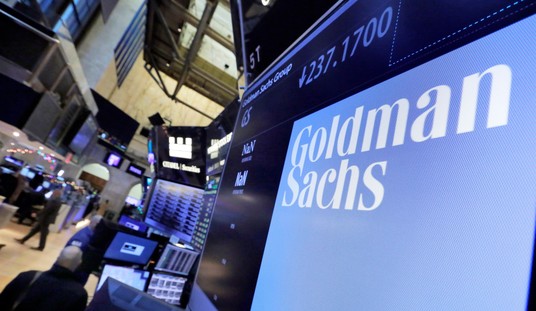At a certain point, this starts looking like a pattern. While still far too high to suggest normalcy, the lack of continuing government aid has not produced a new burst of joblessness either. The number of jobless claims remained under a million for the second week in a row — and in fact stayed at exactly the same level as the previous week, according to the Department of Labor.
The number of people drawing benefits did rise, although still at a relatively low rate in comparison:
In the week ending September 5, the advance figure for seasonally adjusted initial claims was 884,000, unchanged from the previous week’s revised level. The previous week’s level was revised up by 3,000 from 881,000 to 884,000. The 4- week moving average was 970,750, a decrease of 21,750 from the previous week’s revised average. The previous week’s average was revised up by 750 from 991,750 to 992,500.
The advance seasonally adjusted insured unemployment rate was 9.2 percent for the week ending August 29, an increase of 0.1 percentage point from the previous week’s unrevised rate. The advance number for seasonally adjusted insured unemployment during the week ending August 29 was 13,385,000, an increase of 93,000 from the previous week’s revised level. The previous week’s level was revised up 38,000 from 13,254,000 to 13,292,000. The 4-week moving average was 13,982,000, a decrease of 523,750 from the previous week’s revised average. The previous week’s average was revised up by 9,500 from 14,496,250 to 14,505,750.
Last week the topline number was a surprise. This week it’s not quite as surprising, and economists had projected it to drop to 850,000. CNBC’s Steve Liesman and Rick Santelli note that the bigger issue is the continuing-claims number, which had been on an almost-uninterrupted sharp decline since mid-June. There was a methodological change last week, but it didn’t make much of a difference:
The Labor Department reported 884,000 first-time filings for unemployment insurance, compared to the 850,000 expected by economists surveyed by Dow Jones. The total was unchanged from the previous week.
Continuing claims from those filing for at least two weeks rose from the previous week, hitting 13.385 million, an increase of 93,000 from a week ago and an indicator that the strong jobs improvement through the summer may be tailing off entering the fall.
The Labor Department changed its methodology in how it seasonally adjusts the numbers, so the past two weeks’ totals are not directly comparable to the reports from earlier in the pandemic. Claims not adjusted for seasonal factors totaled 857,148, an increase of 20,140 from the previous week.
Politically speaking, this is a mixed bag. The predictions of a jobs-market collapse after the CARES Act aid expired clearly haven’t come to pass. That calls into question the need for another massive, deficit-busting aid package from Congress. However, this is a bad level for a plateau of initial jobless claims, especially with over 13 million Americans on unemployment benefits that will expire sometime in the near future. This is still about four times the rate that we normally see initial claims, which means that the jobs markets are seeing too much churn and chaos for a reliable recovery to take place.
That means that Congress should find a way to pass a narrowly targeted bill that includes payroll supports like the Paycheck Protection Program and perhaps an equally targeted second stimulus. Republicans have dropped the latter from their “skinny” Phase 4 bill, in part to keep the price tag low, but that leaves them politically vulnerable:
The package, which Republicans refer to as their “skinny” bill, includes federal aid for unemployed workers, small businesses, schools and vaccine development.
“I’m optimistic that we’ll have a good vote on our side,” Senator Mitch McConnell of Kentucky, the majority leader, said on Wednesday. “I would hope this might appeal to some of the Democrats.”
But Democrats, who have refused to accept any proposal less than $2.2 trillion, argue that the legislation does little to address the economic devastation of the pandemic.
The measure does not include another round of stimulus checks for American taxpayers or aid to state and local governments, omissions that cut down the overall price tag of the legislation. And while it would resume weekly federal jobless benefits that lapsed at the end of July, it would set them at $300 — half the original amount. Democrats are pressing to reinstitute the full payment.
Republicans have wanted to fix the overpayment in the jobless benefit since it started in early April, so don’t expect them to budge on that. It’s a bit mystifying, however, that they also dropped the direct stimulus at the same time. Democrats can easily attack that as corporate welfare while ignoring workers, both employed and unemployed. They would have been better advised to either keep the stimulus or stick with the $600-per-week bonus, at least in terms of the politics.
Don’t be surprised if Donald Trump has something to say about the stimulus, too. He’s been promising a second round for two months. Senate Republicans had better be prepared to get a view under Trump’s populist bus if they don’t add that back in before today’s Senate vote.







